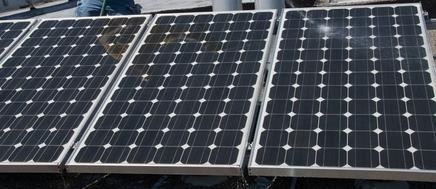Photovoltaic panels can be great energy providers, as long as an eye is kept on potential problems with power output and deficiencies. Peter Mayer of BLP Insurance explains what to look out for
Photovoltaic panels are a maturing technology. They have expected service lives of 20-25 years and evidence of potential lifetimes of 30 years or more.
However, durability is not the only issue associated with the long-term performance of these systems: reliability and power output are equally important. From an economic point of view, the lost energy from unreliable or inefficient photovoltaic panels can be very significant over a long period of time.
Inverters
Inverters convert the direct current generated by the photovoltaic cells into useable alternating current and adjust the frequency and voltage levels to the users’ electrical system. Inverter lifetimes are less than the photovoltaic panel, typically between five and 15 years. Failures occur because of malfunction or deterioration of capacitors, connectors and semiconductors and are often heat related. Generally inverter failures mean inverter replacement. Beneficial maintenance and replacement strategies should ensure the inverter location is readily accessible and an inverter with data logging and communication capacities should be used to allow quick diagnostics and system adjustments to optimise performance.
Photovoltaic modules
Photovoltaic modules are assemblies of different materials and components that protect the silicone cells against mechanical stress, weathering and moisture as well as isolating the cells electrically. Typically, the module comprises: a glass cover; an encapsulant; a silicone cell layer with electrical connections and a substrate which may be glass.
In addition, there may be separating layers and special films or surface modifications to improve specific performance aspects, for example minimising reflection to maximise the amount of light energy getting to the solar cells. This layered panel is fixed into a frame and the edges sealed. The complex construction and the necessity to trade off disparate performance requirements of the various layers mean there are many types of possible defects, resulting in power inefficiencies or failure.
Power degradation or underperformance
Assessing the power output of photovoltaic systems is complicated. Crystalline-silicone PV modules degrade with time – typically a 7% decrease in power output in the first two years of life. Moisture ingress may also cause reduction of output or complete breakdown and, once started, tends to increase over time.
Delamination of the panels results in power degradation, especially when it occurs over active cell areas. Power loss is directly proportional to the delaminated area. Another major cause of reduced power output is hot spot cells, and the temperature of a cell may increase owing to delamination or proximity to the junction box.
Electrical system issues that affect the power output include oxidation of terminal connections, which increases the electrical resistance. Solder connections are vulnerable to thermal fatigue, so the conductivity of connections may be reduced.
Claims are made that PV panels are low maintenance or maintenance free, but power output may decrease owing to lack of system fine tuning and regular inspection, including keeping the panel surfaces clean.
Reduced power output may be due to the performance of the type of silicone under different irradiation conditions, for example at low irradiation some thin film amorphous silicone modules show a sharp decrease in output.
In older PV modules the EVA (ethylene vinyl acetate) encapsulant may degrade, or “brown”, resulting in reduced power output. Degraded areas can be detected by illuminating the module with a “black light”, under which the degraded regions fluoresce. Current formulations of EVA are not prone to this.
However, deciding if power variation is due to faults in the photovoltaic system or if it is the expected response of the PV panels to that particular set of circumstances requires good data from the manufacturer about how the modules should perform. However, this data should be treated with caution as these are based on laboratory test conditions, and building power outputs tend to be lower.
Some defects do not affect power output. There are examples of mechanical degradation of monocrystalline silicone modules resulting in air bubbles and minor moisture penetration which have not caused power decrease. Ultrasonic imaging can be used to assess the interior of laminated modules to locate air voids. Yellowing of Tedlar substrates has little effect on power output.
Where a PV panel has damage or a defect the only solution is replacement. However, often defects are not terminal and a decision has to be made between outright replacement and retaining a panel with sub-optimal performance.
What can go wrong
1 Inverter failure
2 Power output of cells degrades over time
3 Panels delaminate
4 Electrical connections corrode
5 Encapsulant degrades, resulting in reduced power
Postscript
BLP provides building latent defect insurance and for dwellings and commercial buildings. www.blpinsurance.com
Specifier 27 November 2009

- 1
- 2
 Currently
reading
Currently
reading
Building pathology: Photovoltaic panels
- 4
- 5
- 6
- 7
- 8
- 9
- 10



































1 Readers' comment